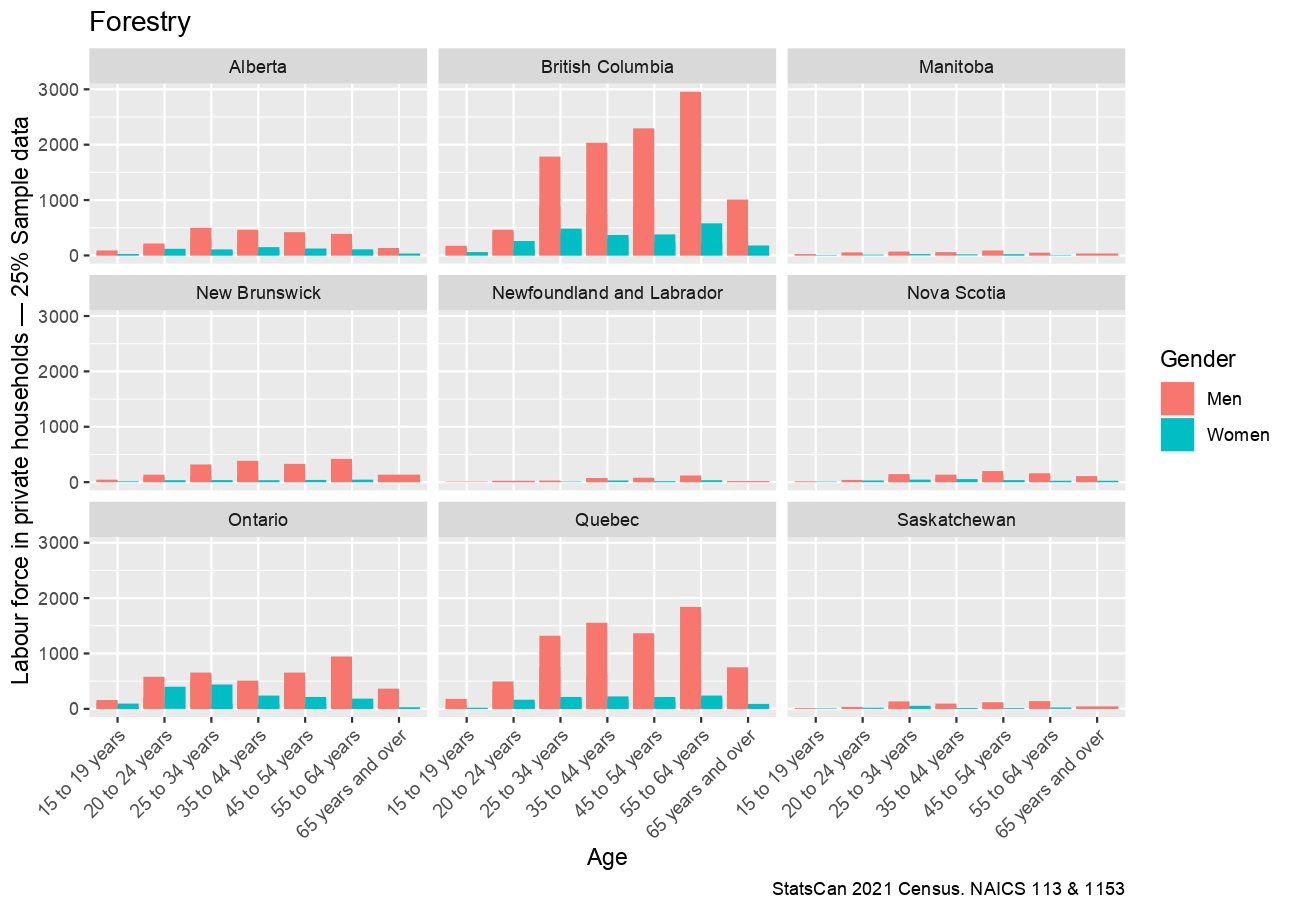Canada's forestry sector is facing a labour shortage due to a wave of baby boomer retirements and little interest from younger generations to pursue a career in forestry. Despite the need for more workers, women still comprise only 17% of the sector in Canada. One study also found that women in forestry are rarely in senior management or supervisory roles, often hold administrative roles, and are paid significantly less than their male counterparts.

We interviewed women who work, or used to work, in the industry to find out the issues they faced working as women in a male-dominated industry, and how the sector can go about fixing it. The names are known to the authors but have been removed alongside other identifying information to ensure their privacy.
Interview Insights – Issues Women Face in Forestry
Microaggressions
One common issue identified by all the women we spoke to was microaggressions. Microaggressions are defined as brief, everyday comments or insults that communicate hostility and bias towards a marginalized group or individual. Microaggressions can be based on multiple factors, like gender, age, race, and sexual orientation.
In forestry’s “Old Boys Club," despite having years of relevant work experience, many of the women shared stories about how women who look young will often be dismissed and discredited as inexperienced, dumb, and naïve – including by their managers.
Hostile Workplace Culture
The women interviewed also said that management often automatically brushed off any concerns brought forward regarding questionable comments, problematic incidences, and microaggressions made by colleagues. Management would excuse their behaviour as simple jokes or that “they didn’t mean it that way.”
And instead, when women stood up for themselves, they were sometimes labelled as aggressive and having attitude problems. One of the women also highlighted her different experiences working for a smaller versus larger company: “At the large company, if I was uncomfortable with a joke or whatever, [I] could bring it up to [a] mentor or supervisor and it would be passed along. At my current [smaller] company, it goes nowhere.” She also described how, unlike the smaller company, the large company actively focused on diversity and equal representation and had women in leadership positions, which made a significant difference.
Unconscious Bias and Perceptions of Women’s Skills
The forestry sector is not particularly diverse, and this is often even more pronounced in small and remote communities in northern BC. It was noted by the women that hiring managers typically make decisions that maintain this status quo. These decisions are often explained by an (incorrectly) perceived skills mismatch.
For certain jobs within forestry, hiring managers have little flexibility when reviewing job applications and look for individuals with the exact type of skillset and experience the hiring manager is familiar with. This leads the hiring manager to overlook less traditional career paths and experiences, which often affects women in particular. One woman said that managers have an exact idea of the kind of person needed for the role going into the hiring process “and they’re not looking at a female’s resume and thinking, that’s their person.”
Interview Insights – Identifying Solutions
These issues lead to decreased job satisfaction, negative physical and mental health impacts, and ultimately create a work environment where women do not want to work. These impacts also tend to lead to companies with a poor work environment having high turnover rates – certainly not helping the labour shortage issue.
However, there are many improvements that can be made to the overall culture of these businesses.
What can businesses do?
Businesses must foster a welcoming work environment free of discrimination to promote a diverse workforce, but this can be difficult to achieve from within. In order to identify and reduce biases, one woman suggested it can be helpful for businesses to participate in workshops on equity, diversity, and inclusion (EDI). The University of British Columbia’s Faculty of Forestry even has an EDI podcast that is free to listen to. However, shifting the workplace culture requires buy-in and commitment from employees at all levels of the organization to be successful.
The importance of female role models and mentoring was also highlighted by several women, and while many larger corporations already have such programs in place, smaller businesses could start implementing similar programs.
What can managers do?
Managers must be supportive of their employees, not dismissing or undermining their experiences and accomplishments. Managers should also listen to employees when concerns are brought up and shut down inappropriate comments. Both of these require managers to also recognize how their own unconscious biases might be at play. Managers could also spearhead ideas such as participation in workshops on equity, diversity and inclusion, and can actively work towards hiring and mentoring more women whenever they are able to do so.
What can individuals do?
Although some interviewees discourage women from entering forestry, others say “embrace your power, don’t apologize for who you are,” and “don’t minimize yourself – expand on yourself as a person.” Negative experiences can be used to your advantage when sharing your story.
While the forestry sector undergoes its tremendous transition, it will be important to have a wide variety of voices represented, and all individuals, including men, have an active role to play in tackling issues such as microaggressions and unconscious bias at their workplace.
What’s in it for companies to diversify?
Recruiting women in response to the forestry sector’s labour shortage is not enough – the workplace culture must improve too so that women can thrive and reach leadership positions. Companies can evolve or risk being left behind and increasingly struggle with staffing their positions. Or they can improve their sustainability and resiliency and continue to grow and innovate. Research has shown that companies that embrace gender diversity, especially in leadership positions, tend to be more profitable, innovative, and creative – plus it is easier to attract and retain talent.
As a baseline, a welcoming environment free of discrimination is required to attract and retain diverse talent. And while many of the larger forestry companies have already been working towards creating more inclusive work environments and continue to innovate with initiatives like mentorship programs, smaller companies must follow suit.






